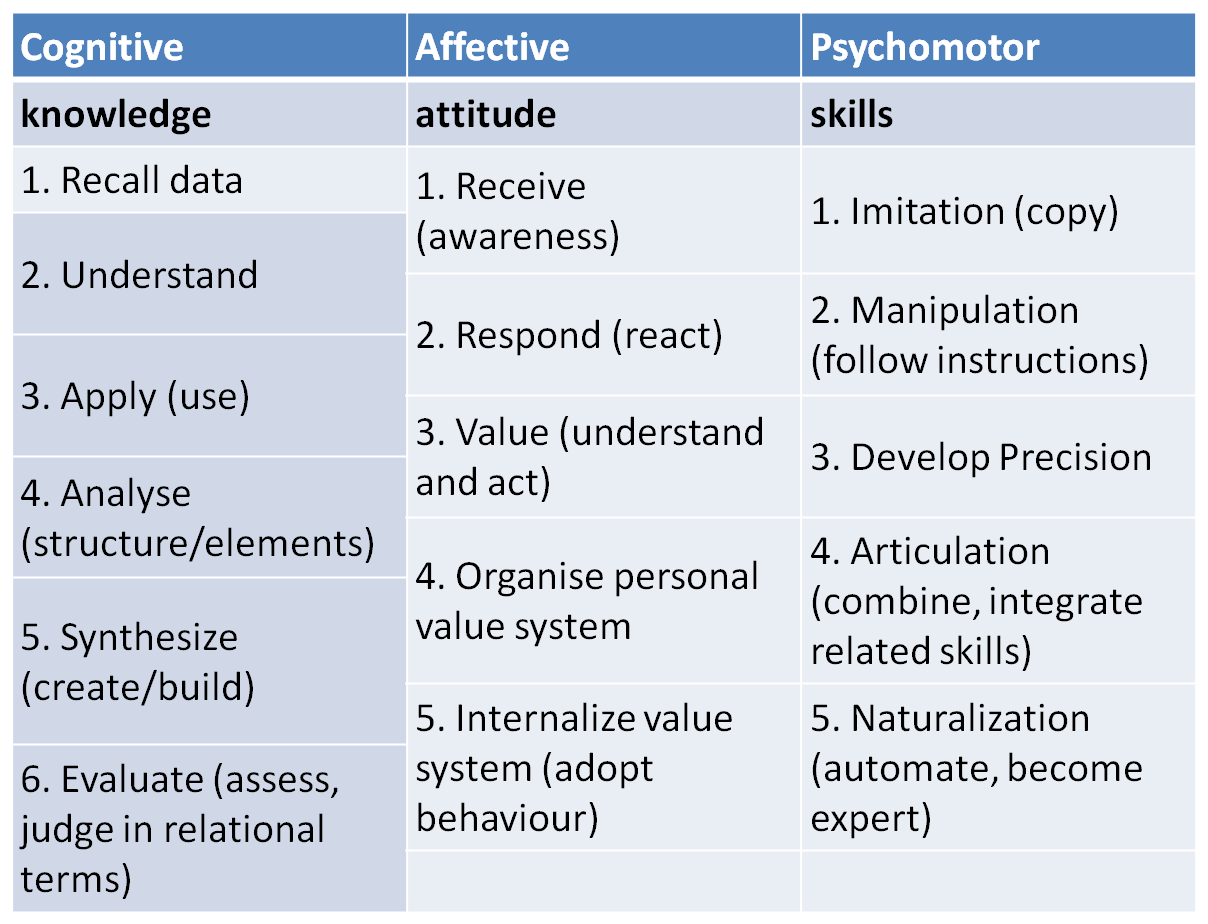The Learning Domains
Benjamin Bloom in 1956 developed a 3 part model known as the Taxonomy of Learning Domains. He splits learning into 3 different categories:
1. Cognitive domain (intellectual capability, i.e., knowledge, or 'think')
2. Affective domain (feelings, emotions and behaviour, i.e., attitude, or 'feel')
3. Psychomotor domain (manual and physical skills, i.e., skills, or 'do')
Bloom sees the domains as progressive; with the learner moving through the 6 stages of each domain as their knowledge, attitude and skills increase or develop.

Bloom, B (1956) Taxonomy of Educational Objectives Book 1: Cognitive Domain New York: Longman
Adapted by Chapman, A (2006) Bloom's Taxonomy of Learning Domains, Available from: http://www.businessballs.com/bloomstaxonomyoflearningdomains.htm, Date Accessed 21.1.2014
Understanding what "domain" we are trying to enable learners to achieve can help us to write appropriate educational objectives as well as consider how we might evaluate the success of these objectives.
If we are essentially providing information; we would be assessing the learner's knowledge following our teaching.
If we are encouraging students to consider a subject from multiple perspectives and to develop a professional attitude; we are assessing the affective domain. Assessing the affective domain is more difficult as personal belief systems differ, however in education the process learners go through to develop attitudes can be assessed.
If we are assessing learners ability to perform tasks etc we are assessing the skills domain; the "know how".
University of Leeds, School of Medicine![]()
Back to Lite Bites